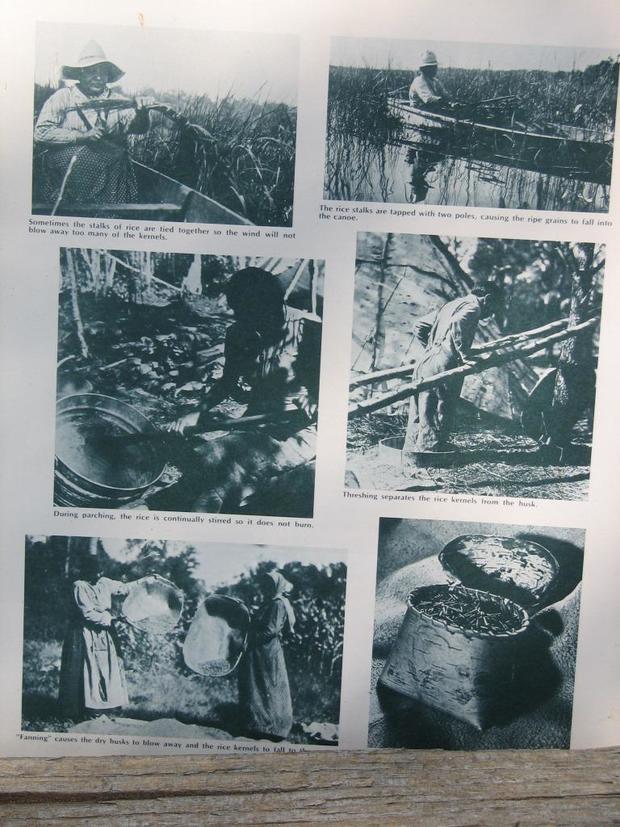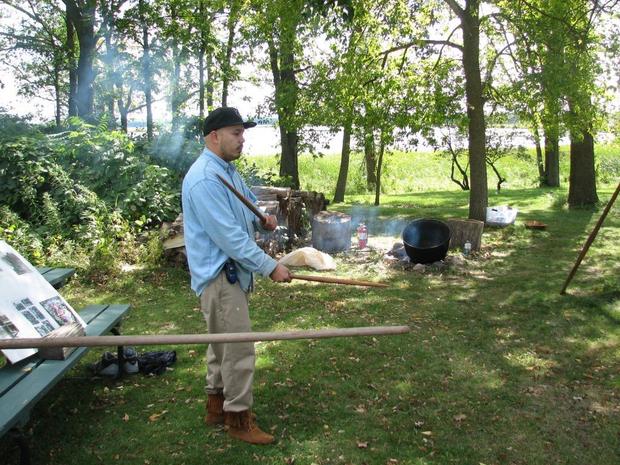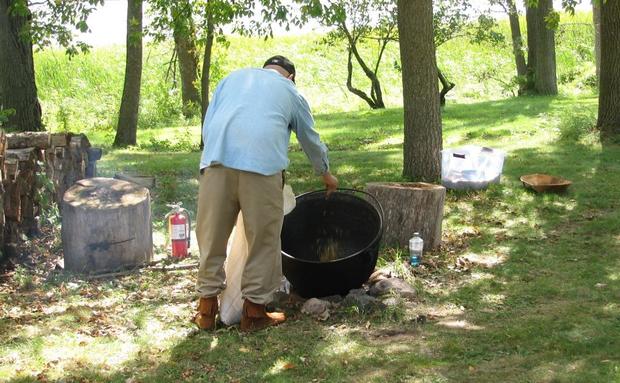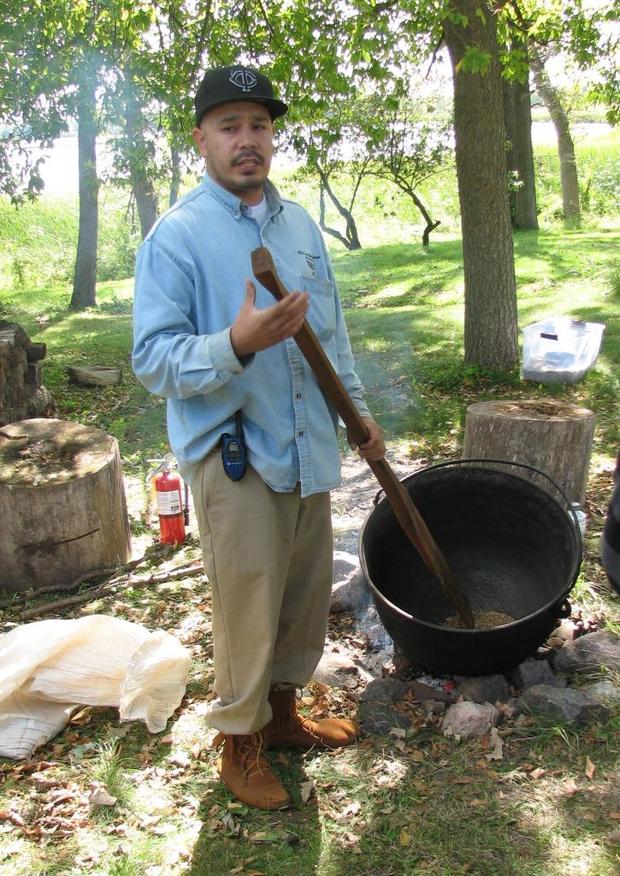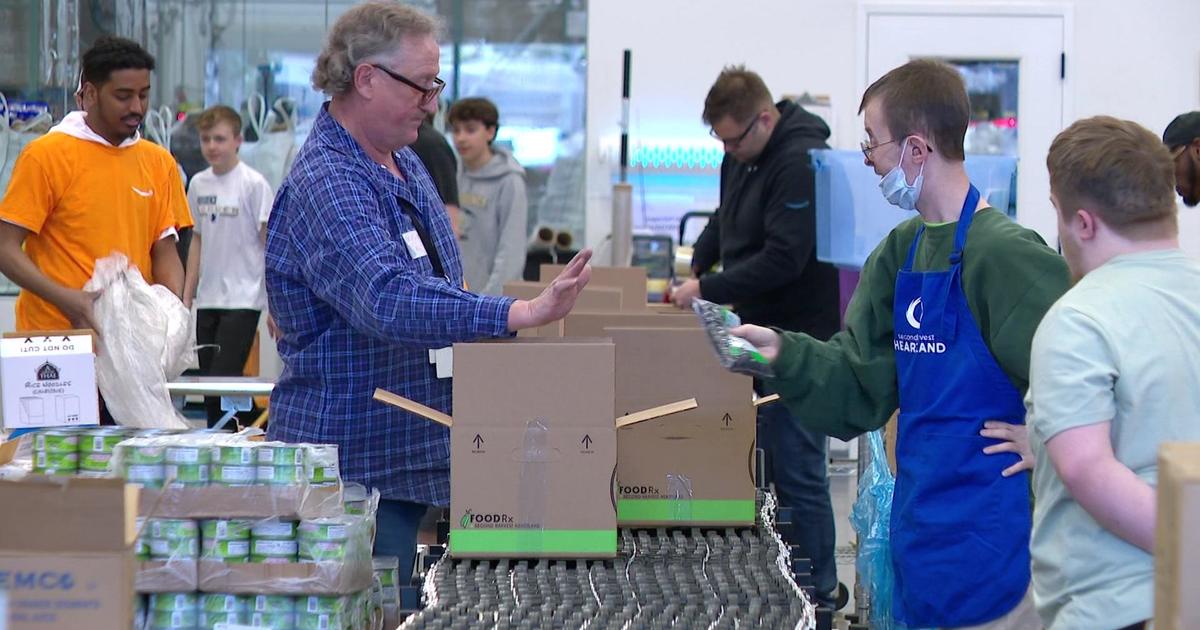Wander Minnesota: Wild Rice
Last weekend (and the next two Saturdays, weather permitting), the Mille Lacs Indian Museum and Trading Post offered demonstrations on traditional Native American techniques of processing wild rice. With the fall foliage just starting to break out around Lake Mille Lacs, this would be a fun day trip both for leaf-peeping and for visiting this well-curated museum and see the demonstration.
The Ojibwe word for wild rice is "manoomin," which loosely translates to "the good berry." Native American lore tells the story of the Ojibwe were told to leave the East Coast to find the place where food grows on the water, which brought them to Lake Superior and surrounding areas, where wild rice became a staple of their diet.
The Ojibwe would take canoes out into the lakes and use ricing sticks to knock the rice from the plants and into the canoe. To guide them through the water, they used special long poles that were forked at one end, so they could push off the shallow lake bottom without harming the wild rice plants.
Once back on shore, the rice needed to be dried before it could be processed. While drying, the rice would be sorted through to remove stalks, leaves, and insects. Once it was suitably dry, the rice would then be parched (or roasted), and it needed to be stirred constantly, or it would pop like popcorn.
Once the parching was complete, it was time for the rice kernel to be removed from the chaff in a process called hulling. Done the traditional way, this is hard work: A small pit would be dug in the ground, and the huller, donning special moccasins just for this task, for "dance" on the kernels until the chaff separated. It's a delicate balance between dancing hard enough to crack the chaff off and dancing too hard, which is why the pit would be located near a tree where poles were braced, giving the dancer a way to adjust the weight and balance.
Finally, it was time for winnowing. The Ojibwe relied on the wind to help with this step, which caused the chaff to blow away while the rice remained on the tray. Once the winnowing was done, the rice was ready to be stored for the winter.
These methods of harvesting and processing lead to a different look and taste than what you might see at the grocery store. It's more flavorful and tends to be a lighter mix of browns, as opposed to the black cultivated wild rice which, contrary to its name, isn't really wild at all.
The weather forecast looks promising for the upcoming weekend. The wild rice demonstrations are held between noon-3:30 p.m. There's no fee for the demonstration itself, which is held on the lakeshore adjacent to the museum. But take the time to pay the admission fee at the museum—it's worth a visit too.
What else is happening in our state? Be sure to check out the 10 p.m. Tuesday night WCCO newscasts, where you can learn more in the weekly segment, Finding Minnesota.
